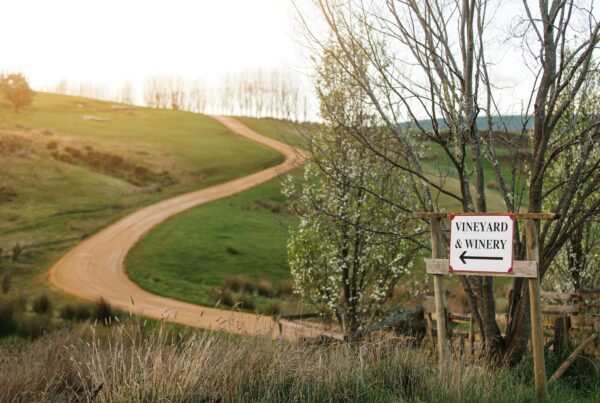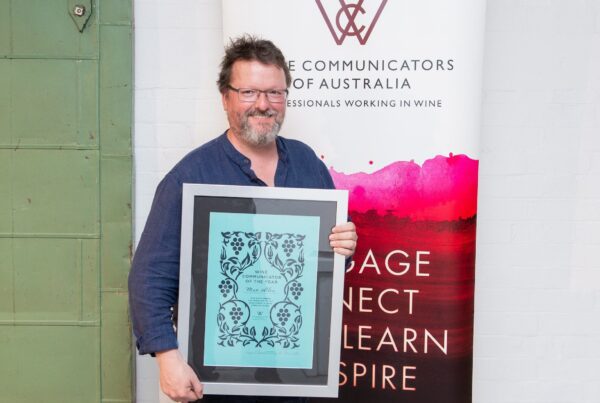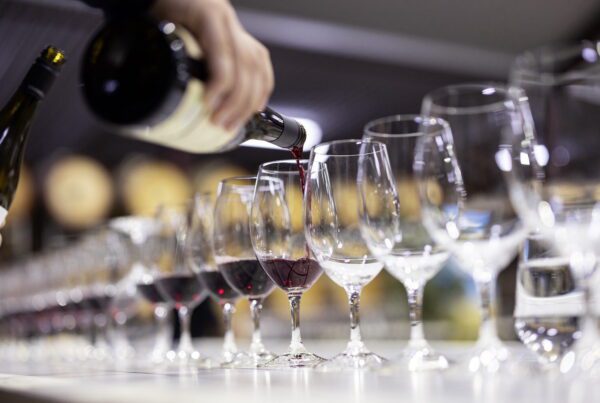
If you are someone who engages in wine marketing, it’s worth having a thick skin.
Maybe it’s related to Treasury Wine Estates pivoting to be a ‘brand-led marketing organisation’ making lots of ‘masstige’ wines that has led to marketing being on the nose.
I must admit the word ‘masstige’ does remind me to stock the car with vomit bags.
Maybe it’s the desperate striving for ‘authenticity’ that has seen marketing branded as somehow beneath us.
Terroir should speak for itself and no marketing spin should be required for the noble pursuit of helping the land, the culture, and the history speak through the wine.
Ahem. Did someone say spin?
A lively exchange on Facebook was prompted by a Michael Dhillon (Bindi Wines) post about ‘natural’ wine.
Rob Walters (importer, author, grapegrower) had this to say about the contribution of the ‘NW’ movement: “But the greatest damage that this ideological movement has ushered in has been a reinforcement of the primacy of marketing (how a wine is packaged and how the winemaker looks and speaks) and… the primacy of the work in the cellar, over that in the vineyard.” – Rob Walters, Facebook.
I agree there’s a lot of marketing spin in the ‘natural’ wine movement. But if the ‘natural’ wines are as mousy and volatile as some claim, and they’re still winning hearts and minds, that’s some super marketing they’re doing there.
Of course they’re not all mousy and volatile, any more than they are ‘natural’.
But some of them are delicious, and interesting, and are encouraging others to re-think mindless intervention.
It truly is a mixed bag, but one thing I agree with the skeptics on is that the marketing via denigration implicit in the use of the word ‘natural’ is a very cynical exercise.
But back to that quote from Walters, ironically one of the country’s most skilled wine marketers.
I agree with the sentiment, but to my mind the aim is not some kind of hierarchy where viticulture sits at the top, followed by winemaking, followed by the dark arts of marketing and sales.
Viticulture needs to be raised several notches in our collective priorities, but marketing has a role to play to get vineyards to the centre of the conversation and keep them there. Marketing for wine of real ambition needs to talk about the vineyard, the region, the site or sites, the ground, the terroir. The aim should be alignment of the origin, the message and the product.
Marketing is creating demand for a product or service.
It’s not the devil’s work, rather one of the most important things that we do in every wine business, and that we do all the time, and just because we’re not aware that we’re doing it, doesn’t mean that we’re not doing it (but it might mean that we’re doing it badly!).
Sometimes, as an antidote to the not uncommon view that wine marketing is a scourge on the industry, we can take solace, and inspiration, from some people who are doing it well, and talking about it clearly. Here are a few of my favourites at the moment:
1. James Clear
This site has some good articles including this one on the Pareto Principle, also known as the 80/20 rule.
In this article, Clear explains the power of accumulated advantage.
It applies perfectly to the wine business: if you have lots of restaurant listings, more people will be exposed to your brand, so you’ll get more restaurant listings.
Success breeds success.
How do we apply this to our business?
Focus. We are better off having 20 by the glass listings in one city than four BTG listings in five cities.
We’re better off having 20 listings of one wine than four listings each of five different wines.
If we want to accumulate advantage, we need to concentrate our efforts, not dilute our successes.
2. Pirate Life
This craft beer brand is killing it, growing like topsy and just as importantly, investing in scaling up to take advantage of their growth.
The partners moved from Western Australia to Adelaide to take advantage of Adelaide’s central position for logistics, and to be based in a less competitive market for craft beer than WA.
It’s paid off in a big way, as has their commitment to cans, which are cheaper, lighter, and easier to ship than glass.
How do we apply this to our business?
Imagine success, and plan for it.
Logistics and marketing may seem separate, but like everything, they are deeply connected. From day one Pirate Life planned for success, so as they grew they already knew exactly how they would fund and manage the business to take advantage of the opportunity.
Success didn’t take them off guard.
3. Bottle Shop Concepts
Dan Sims and his merry band at Bottle Shop Concepts are making tastings fun again.
They plan to hold events in five countries next year, and at the same time scale up their existing events to have more people, more wineries, and more fun.
There’s a commitment to bringing wine to the people in a way that fits how non-wine professionals (aka normal people), like to enjoy wine, with food, music, beer, friends.
But that doesn’t mean it’s low-brow – the luxe glassware and touches like having Grand Cru Burgundy at the Burgundy Bar keep the wine nerds happy too.
How do we apply this to our business?
Take it to the people.
There’s a bit of the Byron Sharp (How Brands Grow) ethos to Sims’ events.
His events like Pinot Palooza might have a defined theme, but he is marketing to anyone who enjoys a glass of wine, and likes a good time.
He’s not marketing to a narrow segment of highly involved wine enthusiasts, he’s creating an event where wine is part of the attraction, but not the be all and end all.
You could attend a Bottle Shop event if you didn’t drink wine, and have just as good an experience as everyone else.
The big message to us producers is not to bore people with vinous technobabble (and please don’t use the word vinous!).
Talk to people about what we love about our wines, which is probably not the pH or the TA.
4. Jacques Lurton
Like Sims, Lurton wants Australia’s wine promoters to talk to people about things they can relate to.
“They need to start talking about the land, the beauty of the land, the soils, the sense of place and the human element,” Jacques says.
“There’s a technical focus here, which is important, but what Australia can learn from Europe is to bring into the wine all those ingredients that are not technical – cultural, historical, human – the consumer’s not going to taste these things, but he’s going to relate to them.”
How do we apply this to our business?
Take some risks.
Jacques has travelled halfway around the world and gone from the epicentre of the wine business in Bordeaux to grow grapes and make wine on Kangaroo Island.
He fell in love with the place and followed his heart. It’s a remarkable story of someone going all in, and pursuing the incredibly unlikely vision of a Bordelais becoming a pioneering vigneron on Kangaroo Island.
5. Unico Zelo
Like Pirate Life and Bottle Shop Concepts, Laura and Brendan Carter are not going to die wondering about whether they can feed the growth.
Start a wine brand, tick.
Start another one that is a JV with grapegrowers to give growers an outlet for their fruit and a piece of the action from the sales.
Make some t-shirts.
Start a distillery and a gin brand.
Open a cellar door with BYO food.
Tour the country relentlessly to meet as many trade as possible.
It’s exhausting just writing it, let alone doing it.
How do we apply this to our business?
To quote Simon Sinek, author of Start With Why, “Don’t sell what you do, sell why you do it.”
It is the Apple-like idea to not be just a computer company, or just a wine company.
The Carters are making products that fit their philosophy of telling uniquely Australian stories, and paying homage to Australian produce.
The other ingredient is their connection to their customers, and willingness to get out on the road and engage with the trade.
6. Michael Dhillon
Michael Dhillon at Bindi makes sure, consciously or not, that his social media reflects what Bindi is about.
He’s drinking great burgundies and standing between narrow, close planted vineyard rows on Instagram, posting thought provoking pieces on Facebook, and referencing family members on the wine labels.
How do we apply this to our business?
Be consistent. Good marketing comes easily when the stories we are telling to create demand for our products are true, and we are living the brand’s values.
Dhillon’s stories are focused on high-value wine, estate-grown grapes, terroir – all things that you find at Bindi and in Burgundy. The product and the stories are aligned.
We don’t need to have the same type of stories as Dhillon to try to achieve the same level of alignment.
7. Aesop
Jump onto Aesop’s website, or better yet, go straight to this link, aesop.com/au/the-fabulist and experience a brand that’s exploring associations that align with its values and interests, and that go well beyond superficial commercial alignments.
“Alongside our commercial activities, we explore and support the arts as an avenue through which to inspire, learn and communicate.”
Design, of their stores and their packaging, has been inspired by the cities where they’ve opened stores and it has become integral to their brand. As you can see from their website, they have embraced the arts and design and made it part of the brand’s identity.
How do we apply this to our business?
Know our brand’s personality, and share it.
When I think of Bindi, I think of close-planted Pinot Noir vineyards and a focus on terroir. It’s real. With Cullen, sustainability has become synonymous with the brand. Bottle Shop Concepts are demystifying wine and having fun. Aesop is repairing our skin and nourishing our minds.
Most of our brands have some traits that we can quietly or not so quietly use to give our brand more personality and identity. But needless to say, it works best when the connection is genuine, and unforced.
That’s when there’s synergy between growing, making and marketing, rather than primacy of one over another.
Related content
Why You Should Keep Spending Money on Marketing During Covid-19 Crisis













Recent Comments